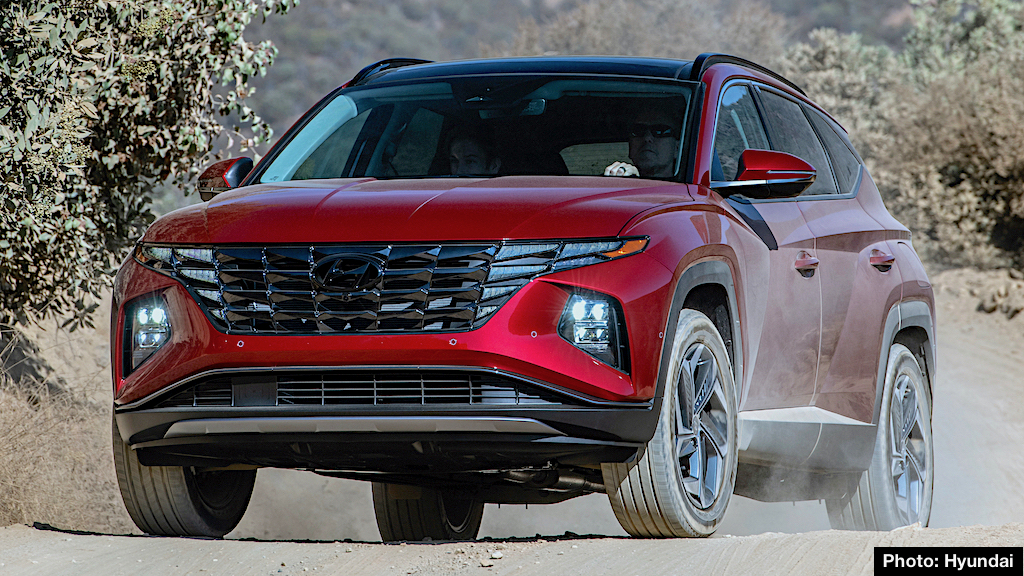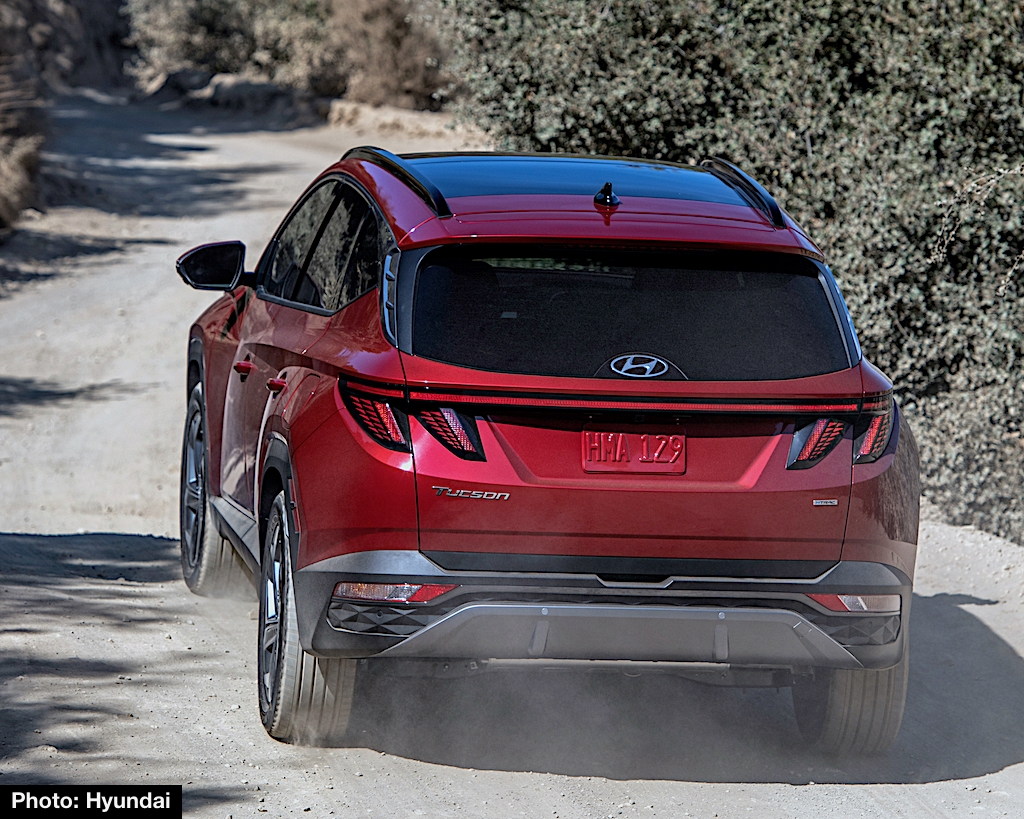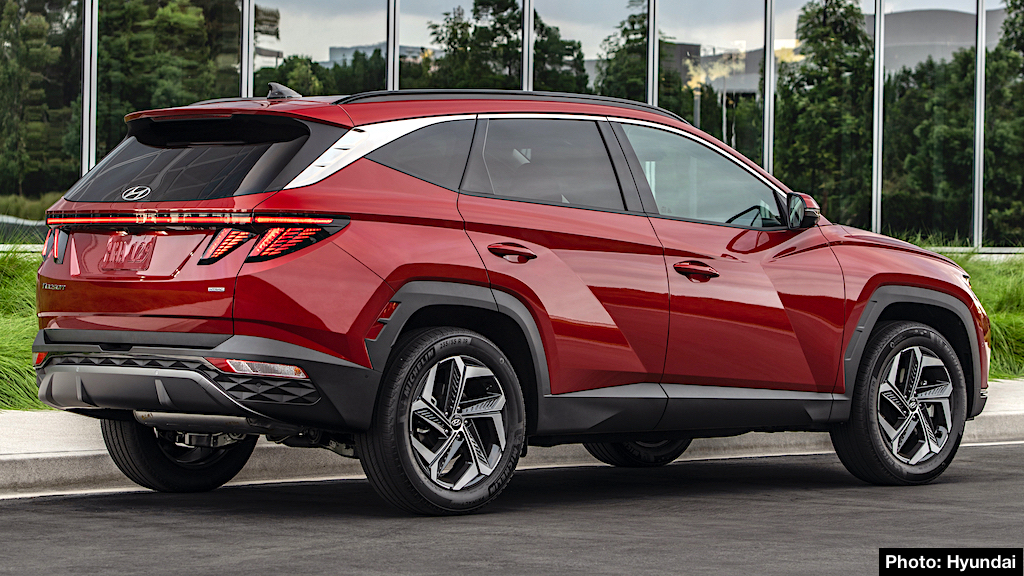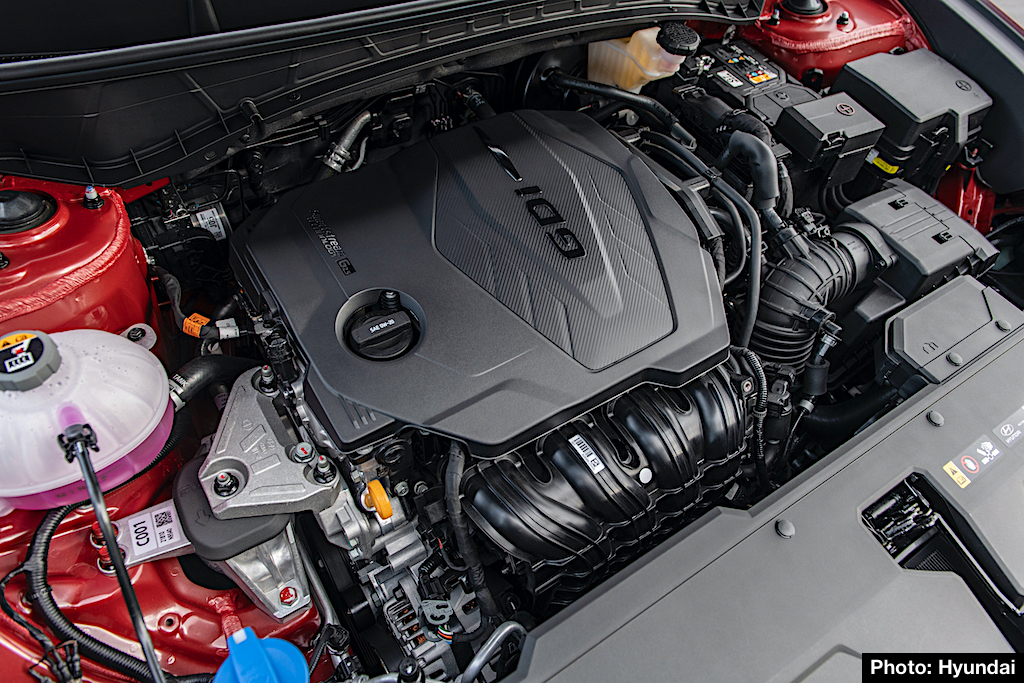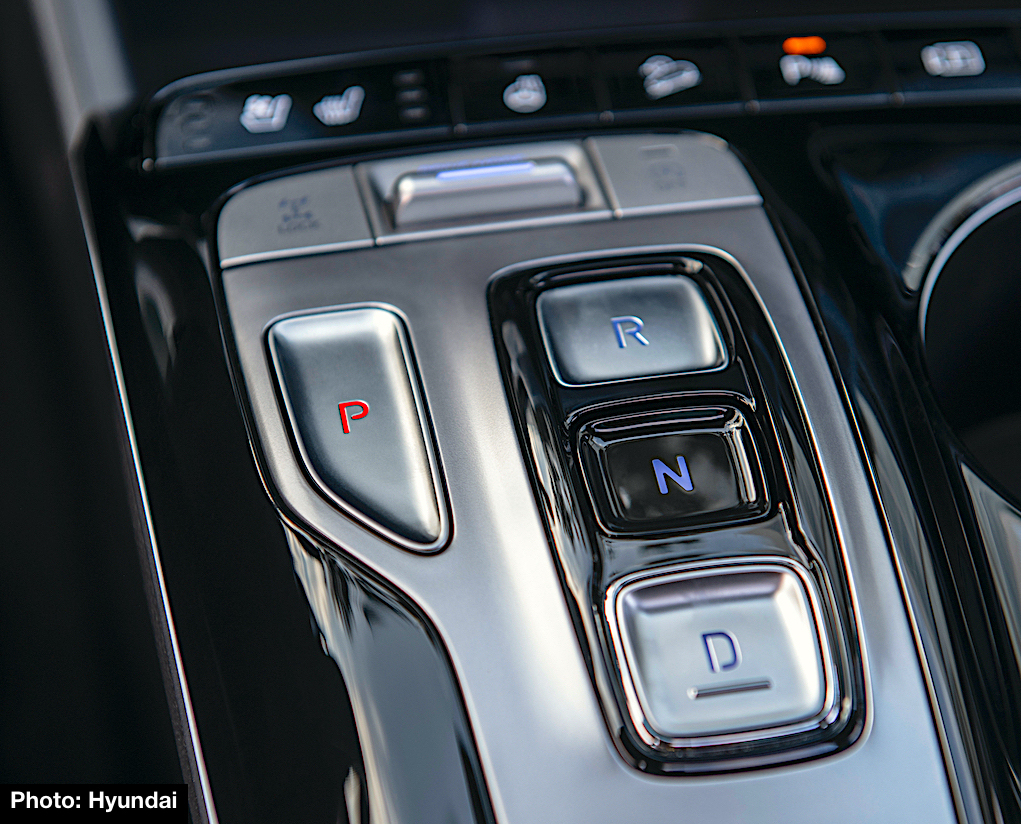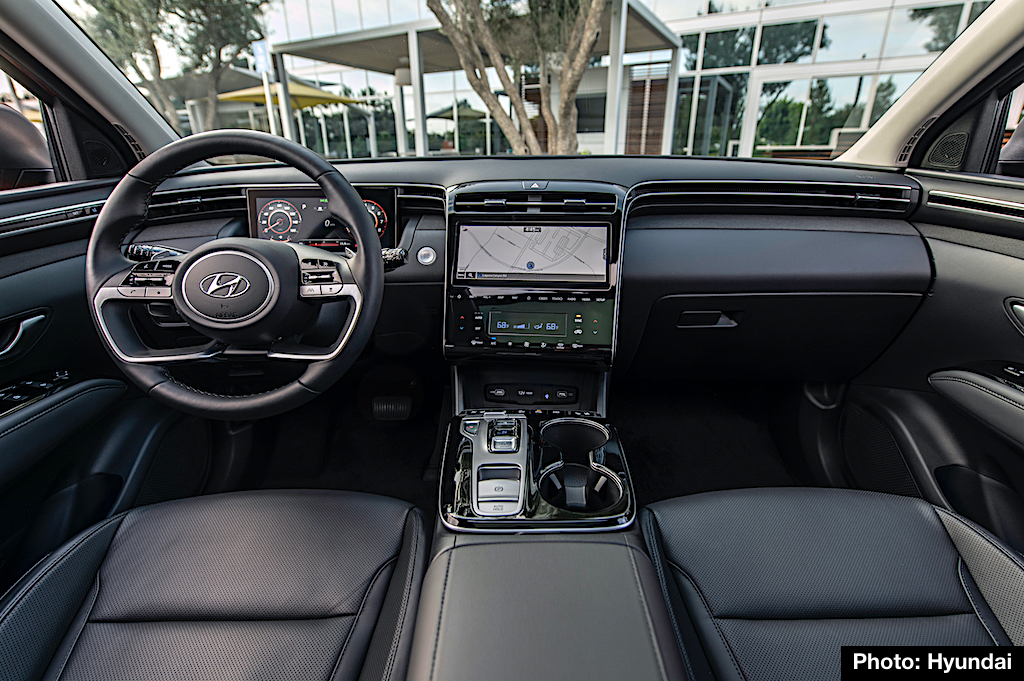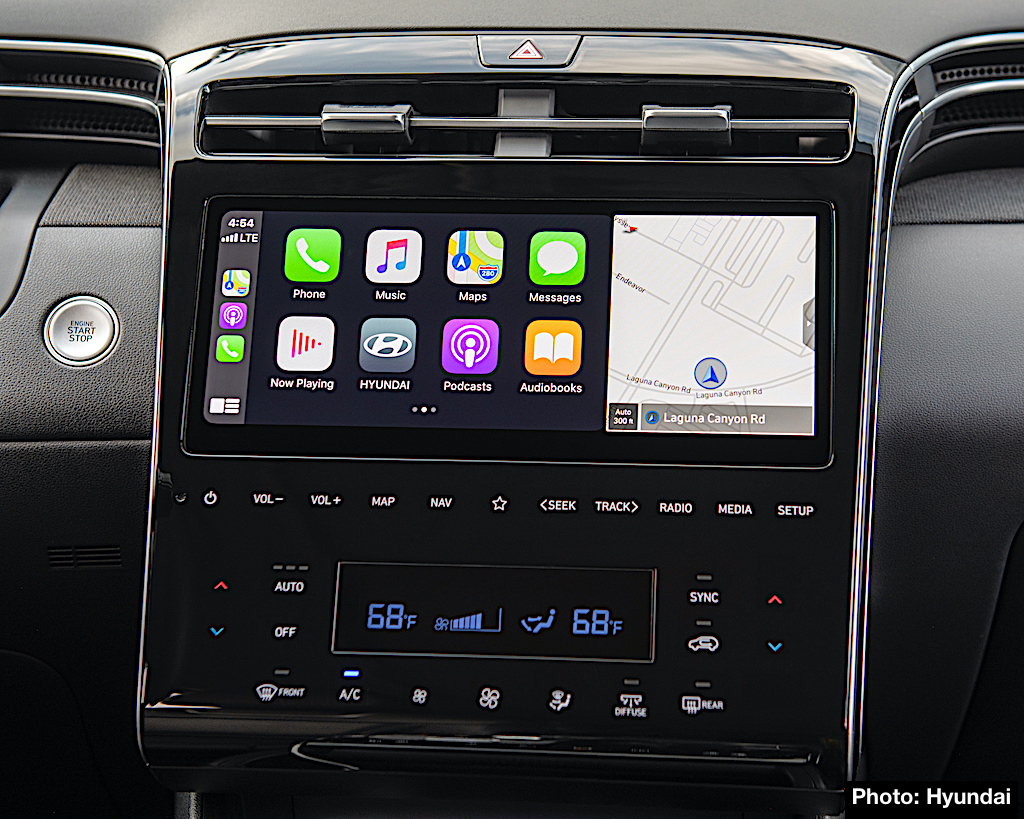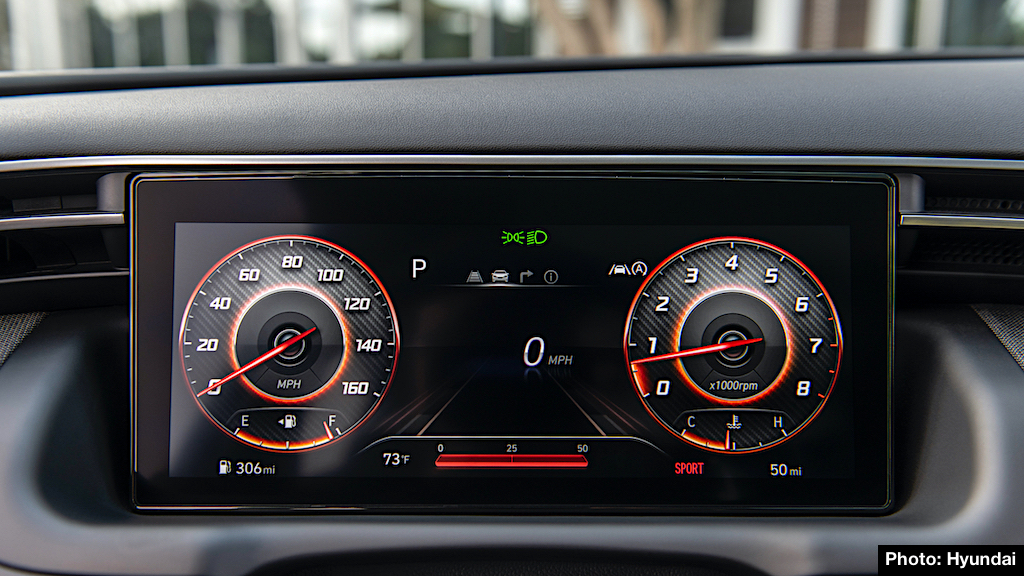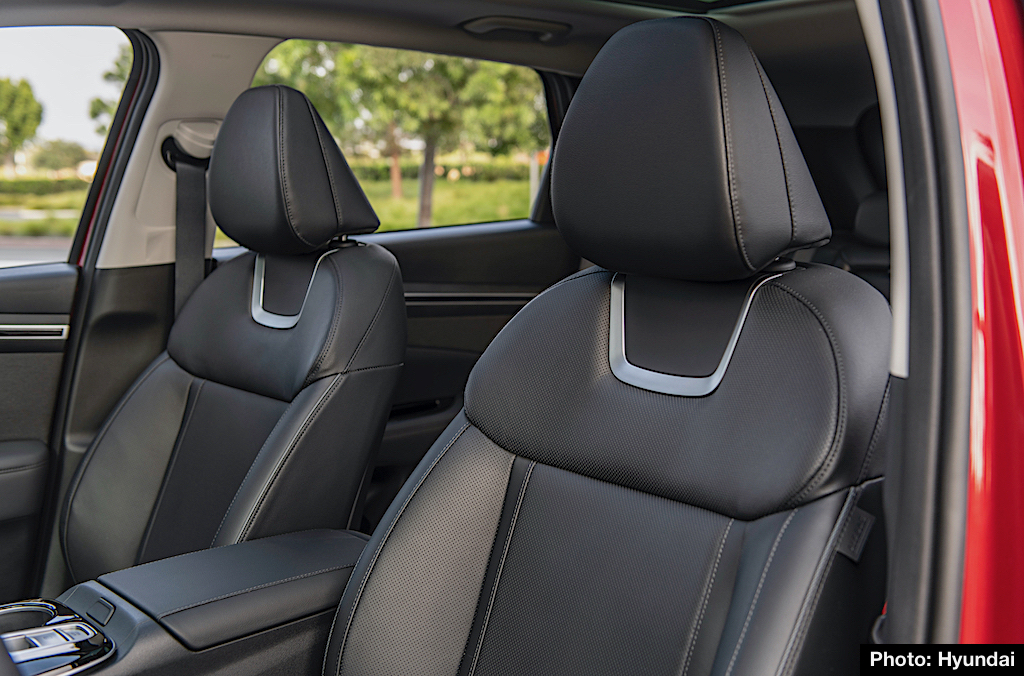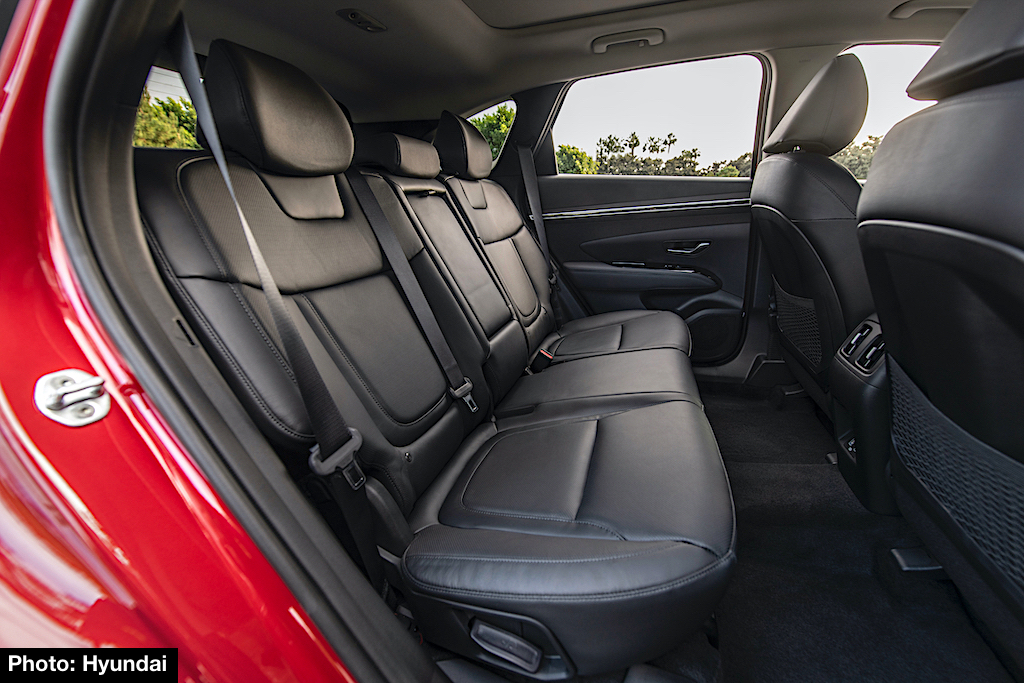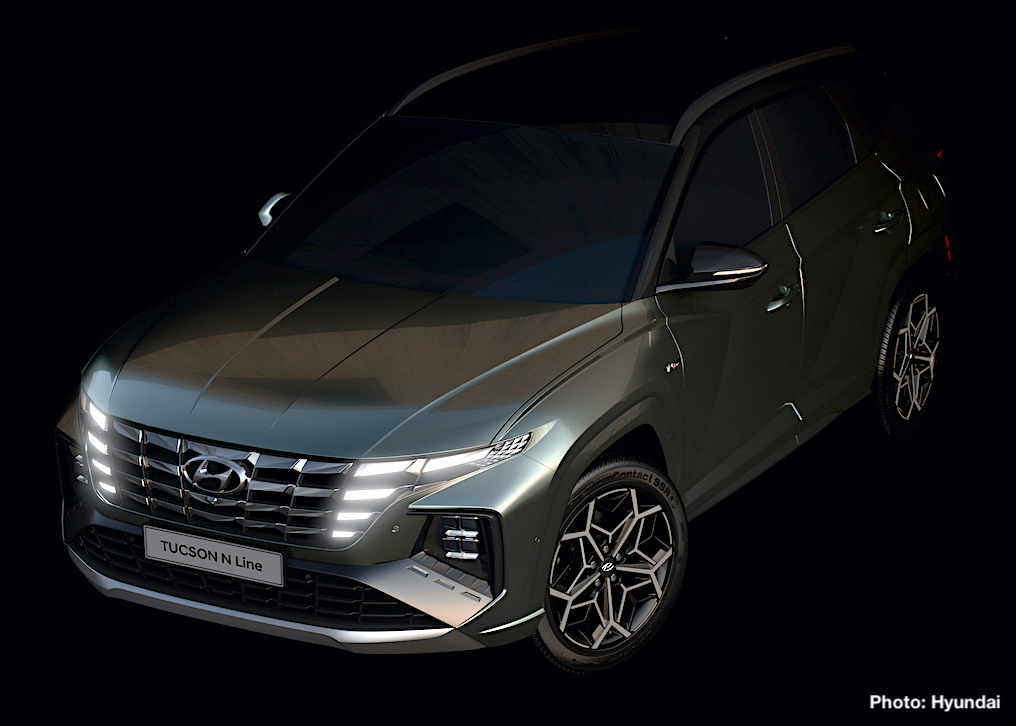By Steve & Tamami Laser
With three generations and more than 7 million units sold across the globe, the Tucson compact SUV has been a tremendous success for Hyundai. So what does the automaker do for an encore? It introduces an all-new, fourth generation Tucson with a cutting-edge design, new powertrain choices, advanced technologies, and more room for passengers and cargo.
The new Tucson builds upon the heritage of its predecessors while fast-forwarding Hyundai’s “Sensuous Sportiness” design into the future. The new look is said to embody “parametric dynamics” with kinetic jewel-type details that really make it stand out.
Up front, Tucson’s parametric grille integrates half-mirror-type daytime running lights that deliver a seamless, dark chrome look when switched off, and a dramatic appearance when illuminated. Long wheelbase models for the U.S. market are longer, wider, and taller than the previous generation.
Tucson features a sporty silhouette with geometric angles and muscular fenders. There’s a chrome accent that emphasizes movement, starting at the base of the A-pillar and sweeping toward the rear where it grows wider at the D-pillar. A full-width rear lightbar with parametric triangular taillights continues the styling theme established up front.
Under the hood, Tucson offers a new Smartstream 2.5-liter GDI 4-cylinder gas engine with 187 horsepower and 178 lb.-ft. of torque (est.). It transfers power to the front wheels, or all four, with available HTRAC® All-Wheel Wheel Drive. An 8-speed shift-by-wire automatic transmission is standard.
New self-charging Hybrid (HEV) and Plug-In Hybrid (PHEV) models have a 1.6-liter GDI turbo engine, electric motor, and lithium-ion polymer battery pack, for a combined output of 227 hp (HEV) and 261 hp (PHEV) (est.). A 6-speed automatic transmission, HTRAC® AWD, and Hyundai’s e-handling technology are standard. With its larger battery, Tucson PHEV targets an all-electric range of 28 miles, and fuel economy of 70 MPGe (manufacturer’s estimates).
“Interspace” is the theme for Tucson’s new interior where spaciousness, technology and information intersect with a streamlined, dual-cockpit design. Tucson can be equipped with a 10.25-inch center touchscreen, a digital gauge cluster, and multi-air ventilation including indirect, diffusing ventilation for front passengers.
The top Tucson Limited’s premium navigation system has split-screen functionality, Android Auto™ and Apple CarPlay®, and a Bose® audio system with 8 speakers. Also included is the Blue Link® Connected Car System, voice-control-enabled climate control, wireless device charging, Hyundai Digital Key, and ambient interior lighting with 64 color choices.
When fitted with the available 10.25-inch digital instrument cluster, the driver nets a high-tech tablet-style, hoodless display mounted behind the steering wheel. In addition to providing a wealth of information, the display changes its appearance when Normal, Sport, Smart, or Snow Drive Modes are selected.
Leather-trimmed, heated and ventilated front bucket seats are standard on Tucson Limited. The 8-way power driver’s seat includes a memory system for two drivers. Front and rear-seat passengers can also enjoy a wide-open feeling with a large, panoramic glass sunroof.
As a five-passenger model, Tucson is fitted with 60/40-split folding and reclining rear seats. The fold-and-dive design creates a flat cargo floor when lowered, and also offers remote releases in the cargo compartment.
Tucson’s available Hands-Free Smart Liftgate offers easy access to the cargo compartment, while the new generation offers more room for passengers and cargo. Passenger volume for Tucson gas models is 108.2 cubic feet, an increase of 6.0 cu. ft., while cargo volume is up by 7.7 cu. ft. to 38.7.
An array of available driver assistance systems includes Forward Collision-Avoidance Assist with Pedestrian, Cyclist and Junction-Turning Detection, Blind-Spot Collision-Avoidance Assist, Rear Cross-Traffic Collision-Avoidance Assist, Lane Keeping and Lane Following Assist, Highway Driving Assist, Smart Cruise Control with Stop and Go, and Remote Smart Parking Assist.
Hyundai says that 2022 Tucson gas and HEV models are planned to launch in spring 2021 in the U.S., with PHEV models following in the summer. A new Tucson N Line is also expected to join the line in spring. With sporty and distinctive exterior and interior cues, plus special equipment and colors, Tucson N Line is the latest addition to Hyundai’s expanding N brand of performance-focused models.
Note: Features, specifications and launch timing for U.S. market models is subject to change without notice
News source and photos courtesy of Hyundai Motor America and Hyundai Motor Co.
Story (commentary) © 2020 CarNichiWa.com
